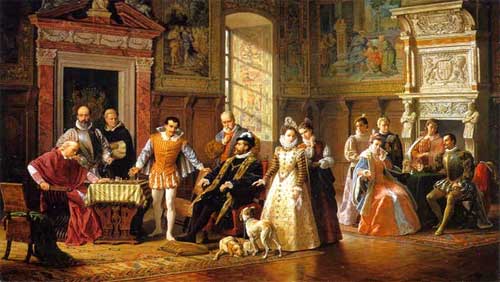French Nobility Ranks: A Comprehensive Guide
Understanding the intricate hierarchy of French nobility can be a fascinating journey through history. The French nobility system, with its rich tapestry of titles and ranks, provides insight into the social structure of France from the medieval era through the modern age. This guide will delineate the various ranks of French nobility, shedding light on their significance and historical context.
Overview of French Nobility
French nobility, or "noblesse," was a legally privileged social class in France before the French Revolution. The nobility was divided into various ranks, each with its own specific privileges and responsibilities. Here are the main ranks in the hierarchy of French nobility

french nobility ranks
1. King (Roi)
- Position: At the apex of the nobility pyramid.
- Role: The sovereign ruler of France, holding supreme authority over the land and its people.
- Example: Louis XIV, known as the "Sun King," epitomized the absolute power of the monarchy.

french nobility ranks
2. Dauphin
- Position: The heir apparent to the French throne.
- Role: Title given to the eldest son of the king, preparing to assume the throne.
- Example: The Dauphin Louis-Auguste, who later became Louis XVI.
3. Prince / Princess
- Position: Members of the royal family, but not direct heirs.
- Role: Often governed regions and held significant power within the kingdom.
- Example: Prince Louis, Duke of Burgundy.
4. Duke (Duc) / Duchess (Duchesse)
- Position: High-ranking nobles often ruling over a duchy.
- Role: Dukes wielded considerable power and autonomy, often serving as military commanders.
- Example: The Duke of Orléans, a title often held by the king’s younger brother.
5. Marquis / Marquise
- Position: Nobles ranking below dukes but above counts.
- Role: Governed border territories known as marquessates, often playing crucial defense roles.
- Example: Marquis de Lafayette, a key figure in both French and American history.
6. Count (Comte) / Countess (Comtesse)
- Position: Nobles ranking below marquises.
- Role: Ruled over counties, known as comtés, and administered justice and collected taxes.
- Example: Comte de Saint-Germain, a notable 18th-century figure.
7. Viscount (Vicomte) / Viscountess (Vicomtesse)
- Position: Ranking below counts.
- Role: Typically assisted counts and governed smaller regions or towns within a county.
- Example: Viscount of Béarn, historically a semi-autonomous region.
8. Baron / Baroness
- Position: Lower-ranking nobility.
- Role: Held lands and titles granted by higher-ranking nobles or the king, often served as local lords.
- Example: Baron de Montesquieu, a famous philosopher and writer.
9. Knight (Chevalier)
- Position: Lowest formal rank of nobility.
- Role: Often served as mounted soldiers and were granted land or titles in return for military service.
- Example: Chevalier Bayard, known for his knightly virtues and bravery.
10. Seigneur
- Position: A lord of a manor.
- Role: Managed estates and exercised feudal rights over peasants.
- Example: Seigneur de La Tour, managing a specific manorial estate.
Conclusion
The hierarchy of French nobility is a testament to the complex and layered structure of French society before the Revolution. Each rank held specific roles, responsibilities, and privileges, contributing to the intricate governance and culture of the time. Understanding these ranks not only provides historical insight but also enriches our appreciation of France's rich heritage. Whether you're a history enthusiast or a researcher, this guide serves as a clear and detailed overview of the French nobility ranks.